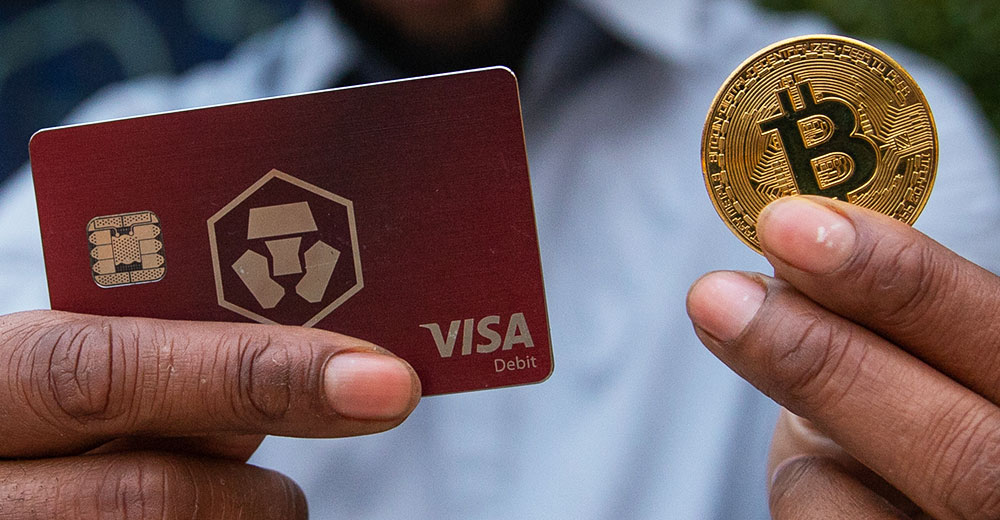A new partnership between multinational e-commerce platform Shopify and cryptocurrency exchange Crypto.com is making it easier for digital shop owners to cash in by adopting crypto payments.
Crypto.com in May announced that Shopify merchants can enable Crypto.com’s cryptocurrency pay platform on their online storefronts. This agreement lets merchants expand their reach by giving customers the ability to pay with more than 20 tokens, including CRO, ETH, BTC, DOT, and DOGE.
This integration further underscores Crypto.com Pay as a preferred cryptocurrency payment app for online merchants who are keen to accept cryptocurrencies, according to the company’s partnership announcement.
Crypto.com serves over 50 million users globally. Its off-chain service handles consumer transactions in real time via the Crypto.com App.
Crypto.com Pay lets merchants receive cryptocurrencies instantly with no transaction fees. The process includes a 0.5% settlement fee, which represents an 80% savings on fees compared to traditional payment processors. Merchants incur no setup costs, and the integration takes minutes to complete.
The agreement with Crypto.com provides Shopify merchants with an additional fast and convenient way for customers to pay for their online orders, according to John S. Lee, lead of blockchain ecosystem at Shopify.
“Our growing blockchain ecosystem demonstrates our commitment to supporting merchants with alternative payment methods on their storefronts, helping to further expand what is possible in commerce,” he said in making the announcement.
Providing more customers and merchants the ability to engage in commerce using cryptocurrencies is a priority for Crypto.com, added Kris Marszalek, co-founder and CEO of Crypto.com.
Push for Crypto Payment Options
As merchants begin to adopt crypto payments, currency preference will be an important factor. Both customers and merchants have expressed a desire to transact with the highest market cap currencies and stablecoins which are less volatile and offer increased scalability.
A February report from Crypto.com and financial technology solutions firm FIS shows both customers and merchants have a growing desire to transact with crypto.
For instance, within the next year 75% of Crypto.com customers want to purchase goods or services with cryptocurrency; and 60% of Worldpay from FIS merchants are willing to accept cryptocurrency for goods or services.
Customers want parity between online and in-store payment options. Merchants appear to be prioritizing the e-commerce experience, according to the report which is available here with no registration required at the time of this publication.
One major example of consumers’ interest in crypto payment options are Crypto.com’s crypto debit cards. Usage reached double-digit growth for per-user spending in 2021 compared to the previous year as it entered new markets.
A March spending report for cryptocurrency available here (also ungated) highlights these consumer trends:
- Groceries were the main spending category with 51% of all crypto spent on daily goods.
- In-store purchases climbed by 11%.
- Overall, the fashion (clothing and footwear) category saw the strongest spending growth at 50%. Spending on transportation and recreation was second at 46%.
Crypto Partnership Makes Sense
Shopify operates a marketplace model where that gives third-party vendors, software, and service providers the opportunity to get in front of its clients. So this type of third-party application will increase the attractiveness of Shopify itself and also support lock-in effects into their ecosystem, explained Marcel Hollerbach, chief information officer at Productsup.
“Supporting crypto payments itself also is just logical given there is more and more crypto adoption. More payment methods typically lead to higher conversion rates on e-commerce merchants’ sites,” he told the E-Commerce Times.
Consumer adoption of crypto payments now mimics internet adoption itself in the mid-1990s, he offered. Crypto adoption is still in very early stages, noted the latest report from Andreesen Horowitz.
“They outlined that crypto adoption is somewhere where internet users were in 1996 if you compare active wallet addresses with active internet users back in the day. So, it is still very early,” he observed.
The use of cryptocurrency is driven by multiple factors. Big banks, and fintech firms e.g., PayPal, have entered the game and provide bitcoin wallets to their users. Countries started adopting bitcoin, and social media giants like Meta are getting into the game of NFTs, where the underlying tech also is based on crypto, said Hollerbach.
Know Thy Provider
For cryptocurrency to become as readily used by consumers as other digital payment forms, the transaction cost needs to come down further. A lot of cryptocurrencies still have scaling issues that are being worked on, for example.
“Crypto prices need to stabilize. At the moment, there is a lot of price volatility which can mean that the shirt you ordered costs $20 on one day and $25 on another,” said Hollerbach.
New crypto users should follow two main cautions, he offered.
First, they should select a trustworthy bank or exchange where they buy their crypto. Coinbase, Kraken, Crypto.com, or PayPal could be good options.
Second, a lot of scammers try to take advantage of inexperienced users. Crypto users must vet the source, or the vendor involved in the transaction. If it looks “phishy,” do not engage.
Smoother International Transactions
Crypto brings native currency to the internet. It is very flexible, noted Hollerbach.
For instance, someone in the U.S. can make a transaction at the same time as a consumer in El Salvador without having any restrictions on currency/exchange rates. Payments with cryptocurrency can be more private as well.
“Cryptocurrencies have no regard for national borders. An individual in one country can send coins to someone in a different country without any added difficulty. With traditional financial services, getting funds across international borders can take a long time and come with hefty fees,” said Hollerbach.
“In some cases, he continued, “doing so might not even be possible due to regulations, sanctions, or tensions between specific countries.”
Given that players like Meta and PayPal are in the game now, crypto is becoming easier to use, he added.
Concerns To Consider
Crypto involves more than just one type of currency. Besides Bitcoin or Ethereum, there are also so-called stablecoins like Circle USDC or Tether USDT.
These stablecoins are technically crypto put represent a one-to-one peg to the dollar. So one is paying with crypto but at the value of a dollar.
“This is very interesting for consumers and merchants as it represents a very stable and plannable way of paying with crypto,” noted Hollerbach.
Merchants could also allow payments with Bitcoin and Ethereum and speculate that they will grow in value. This speculation is risky though, especially in bear markets like right now where the value of cryptocurrencies can also trend massively negative, he cautioned.
Shopify warns users to verify that cryptocurrencies are an acceptable form of payment in their region before accepting them.























































Social Media
See all Social Media